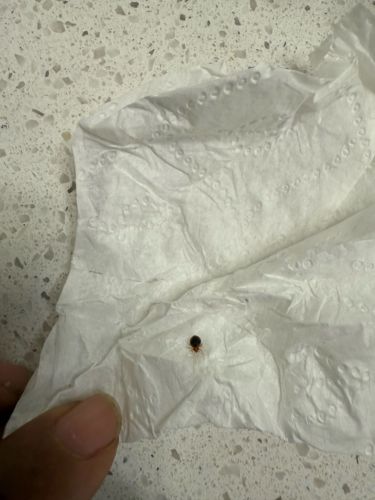Tick (likely a deer tick or blacklegged tick based on appearance)
Scientific Name: Potentially Ixodes scapularis (for deer tick/blacklegged tick). Precise identification requires microscopic examination.
Order & Family: Order: Ixodida (Ticks), Family: Ixodidae (Hard ticks) or Argasidae (Soft ticks). Based on the image, it appears to be a hard tick.
Size: Unfed: 1-5 mm (depending on species and life stage). Fed: Can swell up to 10-15 mm.

Natural Habitat
Wooded areas, tall grasses, brush, leaf litter, and urban/suburban environments where hosts are present.
Diet & Feeding
Blood of mammals, birds, reptiles, and amphibians.
Behavior Patterns
Ticks are parasitic arachnids, not insects. They typically spend most of their lives off-host, waiting for a suitable host to pass by. They cannot jump or fly, but instead crawl onto a host from vegetation or other surfaces. Once on a host, they will find a suitable spot to attach and feed. After feeding, they drop off the host to digest and molt or lay eggs. Their lifecycle involves four stages: egg, larva, nymph, and adult, with each active stage requiring a blood meal.
Risks & Benefits
Potential risks: Ticks are known vectors for various diseases, including Lyme disease, Anaplasmosis, Babesiosis, Powassan virus, and Rocky Mountain spotted fever. The specific diseases transmitted depend on the tick species and geographical location. Benefits: While ticks have a role in the ecosystem, such as being a food source for some animals, their primary interaction with humans is as disease vectors, so they are generally considered a pest.
Identified on: 8/17/2025